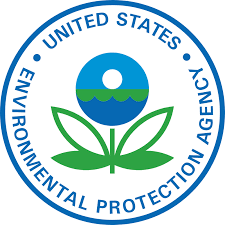Bipartisan Infrastructure Law, or HR 3684 Infrastructure Investment and Jobs Act
The Infrastructure Investment and Jobs Act funds and directs development and implementation of grant programs related to post-consumer materials management and related education and outreach. It also directs development of battery collection best practices and battery labeling guidelines that will contribute to waste prevention, reduction, recycling and reuse of a variety of products and materials.
The Infrastructure Investment and Jobs Act includes provisions that contribute to more sustainable consumption and production in the United States. It provides funding and direction for the Environmental Protection Agency (EPA) that contributes primarily to more sustainable consumption and materials management through infrastructure grants, education and outreach grants, and other activities. The major relevant components of the law, as it relates to EPA requirements, are as follows:
· Directs and funds EPA to develop and implement a post-consumer materials management infrastructure grant program to manage plastic waste (also referred to as Solid Waste Infrastructure for Recycling (SWIFR) Grant Program). This funding is also tied to direction provided to EPA under Section 302a of the Save Our Seas Act 2.0.
· Directs EPA to award education and outreach grants focused on improving material recycling, recovery, management, and reduction and directs EPA to develop a model recycling program toolkit for States, tribes, local governments.
· Calls for increased coordination at the federal level regarding the Comprehensive Procurement Guidelines (CPG) program and increases the frequency by which EPA must review the CPGs.
· Directs EPA to provide assistance to the educational community to promote the introduction of recycling principles and best practices into public school curricula.
· Directs EPA to develop best practices that may be implemented by State, Tribal, and local governments with respect to the collection of batteries to be recycled in a manner that to the maximum extent practicable, is technically and economically feasible, is environmentally sound and safe for waste management workers, and optimizes the value and use of material derived from recycling of batteries.
· Establishes a program to promote battery recycling through the development of voluntary labeling guidelines for batteries and other forms of communication materials for battery producers and consumers about the reuse and recycling of critical materials from batteries. The purposes of the program are to improve battery collection and reduce battery waste, including by identifying battery collection locations and increasing accessibility to those locations; promoting consumer education about battery collection and recycling; and reducing safety concerns relating to the improper disposal of batteries.



